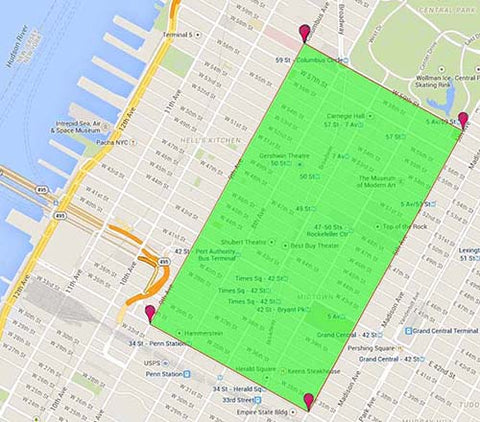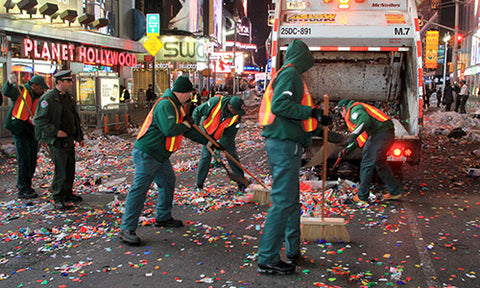
How NYC Restores Times Square After the New Year's Confetti Storm

Source: The Guardian
Approximately 1 million people congregate in New York City to see the Times Square Ball drop every December 31. An event of that scale means somebody has to clean up afterward. While picking up trash after such a massive gathering sounds like a janitor's worst nightmare, it turns out the New York City Department of Sanitation transforms Times Square's streets from confetti wasteland to sparkling metropolis before the Big Apple's partygoers wake up the next morning.

Jeff Pitts
"The Times Square area is the heart of Manhattan, a major tourist attraction, and it's very important for us to show that we can have a great celebration and at the same time we can clean up after ourselves," said Jeff Pitts, deputy chief of the New York City Department of Sanitation.
For a 48-hour period beginning at midnight December 31 and ending at midnight January 2, New York City undergoes a $50,000 operation to prepare for the ball drop and subsequently clean up the party. Pitts said 156 workers cleaned the streets during the 2-day period of New Year's Eve 2013 and New Year's Day 2014 using 70 leaf blowers, 24 street sweepers, 22 garbage trucks and many other resources including Haulster utility vehicles, pickup trucks, brooms and shovels.

Image created using Daft Logic's Google Maps Area Calculator
The New York City Sanitation Department's New Year's cleanup efforts span from 59th to 34th Streets north to south and 5th to 9th Avenues east to west.
The sanitation workers cover five blocks running east to west (5th to 9th Avenues) and 26 blocks running north to south (59th to 34th Streets). They divide the area of approximately 0.87 square miles into seven sectors, where on average one supervisor oversees 10 sanitation workers. They pick up 50 to 52 tons of trash consisting of confetti, noisemakers, cardboard, abandoned clothing, costumes and more.
"Anything that someone could possibly put into their pocket or carry, we find it. There's so many different items," Pitts said.
Beginning at midnight on New Year's Eve, the sanitation department works in conjunction with the New York City Police Department to yank all trash cans off of the streets. Kathy Dawkins, the sanitation department's director of public information, said hauling away trash cans for the night thwarts terrorists who seek a spot to hide an explosive. The measure also prevents an intoxicated partygoer from perching atop a trash can or tossing one at another attendee.

Kathy Dawkins
Other preemptive safety measures include removing newspaper machines, sealing manholes shut, metal-detecting everyone upon entry and confiscating bottles and cans upon arrival.
"We emphasize maximum safety and quality work with minimum public disruption," Pitts said.
After the ball drop finishes, the crowd begins leaving rather quickly and the newly arrived cleaning crew springs to work. The idea is to push debris from the building line to the curb. Leaf blowers and Haulster utility vehicles with "squeegees" attached shove the trash from the curb into the street, where street sweepers and mechanical brooms make a few passes at it all. Objects that could disrupt the machines' operation such as cardboard, string, belts and metal wires are picked out by crew members.
The bulk of the trash left on the sidewalks and streets is cleared by 7 a.m. January 1, seven hours into the new year. So then cleanup is done, right? Not quite. Pitts said a "second wave" of confetti that had landed on Times Square's rooftops at the stroke of midnight begins to blow off skyscrapers onto the streets that morning. That's why the city schedules New Year's cleanup through January 2.

Source: New York City Department of Sanitation
New York City sanitation workers sweep confetti after the ball drop on January 1, 2012.
New York is used to cleaning up after a big celebration, as the West Indian Day Parade in September and the Macy's Thanksgiving Day Parade in November require similar large-scale cleanup efforts. Speed is key to a successful operation, said Dawkins.
"I think what's important is the department is able to clean that area quickly and get traffic moving at least by the early part of the morning, considering the number of the people that are there," Dawkins said. "Basically you get over a million people there, and by 7:00 there are places open to traffic--like the celebration almost never happened."

 Protect & Save with SuperFreak.
Protect & Save with SuperFreak.


